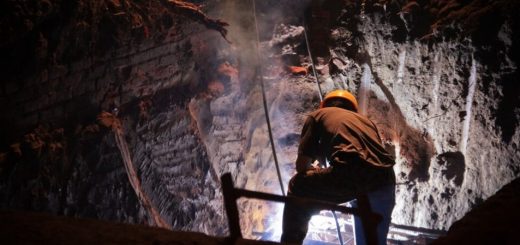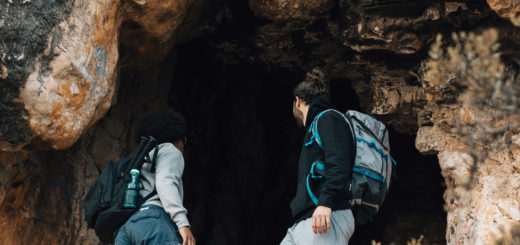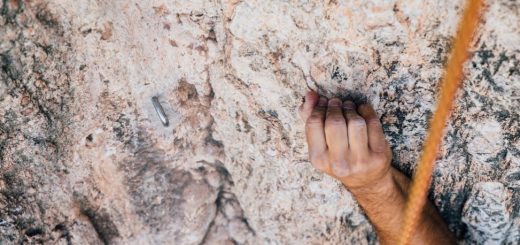Equipment and Technologies in Caving: Gear Up for Underground Exploration
Caving, or spelunking, is a unique and thrilling adventure that takes explorers into the depths of the Earth. To safely navigate the complex and challenging underground environments, cavers rely on a range of specialized equipment and cutting-edge technologies. In this article, we will explore the essential gear and technologies that make cave exploration possible and safe.

Helmets with Headlamps
One of the most fundamental pieces of equipment for cavers is a helmet equipped with a powerful headlamp. These headlamps provide essential illumination in the pitch-black darkness of caves. They are designed to withstand the rigors of caving, including exposure to moisture and potential impacts from low ceilings or falling debris.
Harnesses and Safety Ropes
Cavers often encounter vertical sections within caves that require specialized equipment for safe navigation. Climbing harnesses and dynamic safety ropes are essential. Harnesses distribute the caver’s weight evenly, while ropes are used for rappelling and ascending. These tools allow cavers to descend into deep pits or ascend vertical shafts securely.
List of Essential Caving Equipment
Here is a list of essential equipment used in caving:
- Helmet with Headlamp
- Climbing Harness
- Safety Ropes
- Communication Devices (Radios, Smartphones)
- Cave Mapping Tools (Compasses, Clinometers, Laser Scanning)
- First Aid Kit
- GPS and Navigation Devices
- Specialized Caving Clothing
- Technical Climbing Gear
- Environmental Monitoring Equipment
Comparison of Headlamp Options
| Headlamp Model | Brightness (Lumens) | Battery Life (Hours) | Waterproof Rating | Weight (grams) |
| Petzl Tikka XP | 300 | 120 | IPX4 | 85 |
| Black Diamond Spot | 300 | 200 | IPX8 | 88 |
| Princeton Tec Apex | 350 | 200 | IPX7 | 279 |
| Fenix HL60R | 950 | 100 | IPX8 | 121 |
| Coast FL85R | 615 | 13 (rechargeable) | IPX4 | 122 |
Communication Devices
Effective communication is crucial for the safety and coordination of caving teams. Two-way radios with long-range capabilities or satellite communication devices ensure that cavers can stay in contact, even in remote underground passages. Smartphones equipped with cave mapping apps have also become valuable tools for navigation and communication.
Cavers rely on accurate cave maps for navigation and exploration. Traditional techniques involve using compasses, clinometers, and tape measures to create detailed cave surveys. Nowadays, laser scanning technology and 3D mapping tools have revolutionized the process, allowing for precise cave mapping and visualization.
First Aid and Safety Kits
Safety should always be a top priority in caving. Cavers carry well-equipped first aid kits that include essential supplies for addressing minor injuries or providing initial care in emergencies. Additionally, safety kits may include emergency shelter, signaling devices, and survival gear.
To maintain their bearings and track their progress in caves, cavers often use GPS devices specifically designed for underground use. These devices can provide accurate location data in challenging subterranean environments, aiding in navigation and preventing getting lost.
Advanced Clothing and Gear
Cavers wear specialized clothing that is durable, moisture-resistant, and designed to withstand the abrasive surfaces encountered in caves. This includes cave suits, gloves, and sturdy footwear. Some cavers also use knee and elbow pads for added protection in tight spaces.
For navigating vertical or challenging terrain within caves, technical climbing gear such as ascending devices, ascenders, and descenders are essential. These tools allow cavers to safely negotiate steep passages.
Environmental Monitoring Equipment
Cave conservation is a priority for responsible cavers. Some may carry environmental monitoring equipment to assess conditions within caves, including humidity, temperature, and air quality. This data helps in preserving cave ecosystems.
Conclusion
Caving is an adventure that combines exploration, science, and adventure. It requires a range of specialized equipment and technologies to ensure the safety and success of cave exploration. As technology continues to advance, cavers benefit from improved mapping tools, communication devices, and navigation equipment. While gear and technology are essential, they should always be complemented by proper training and respect for the delicate underground environments that cavers are privileged to explore. With the right equipment and knowledge, cavers can unlock the secrets of the Earth’s hidden realms.


